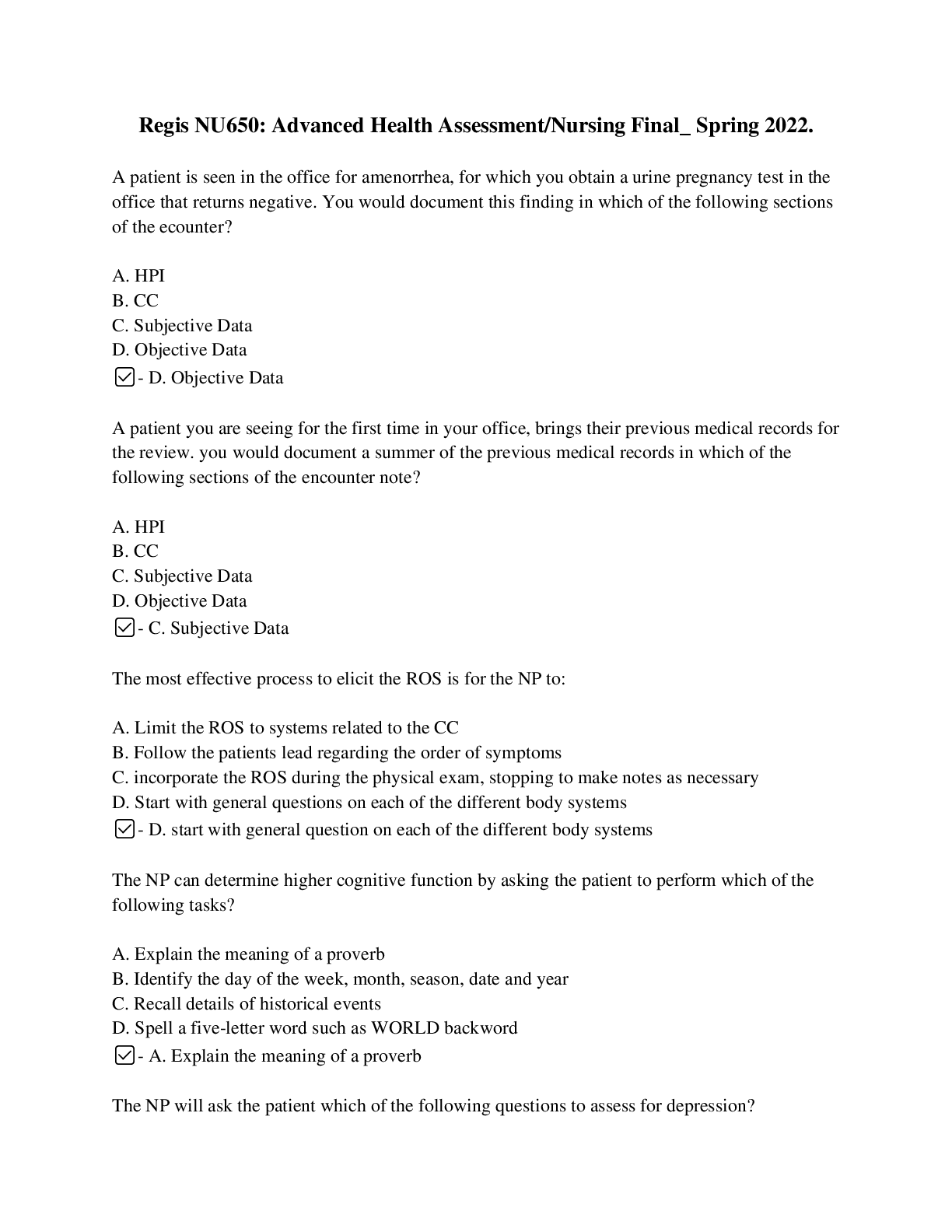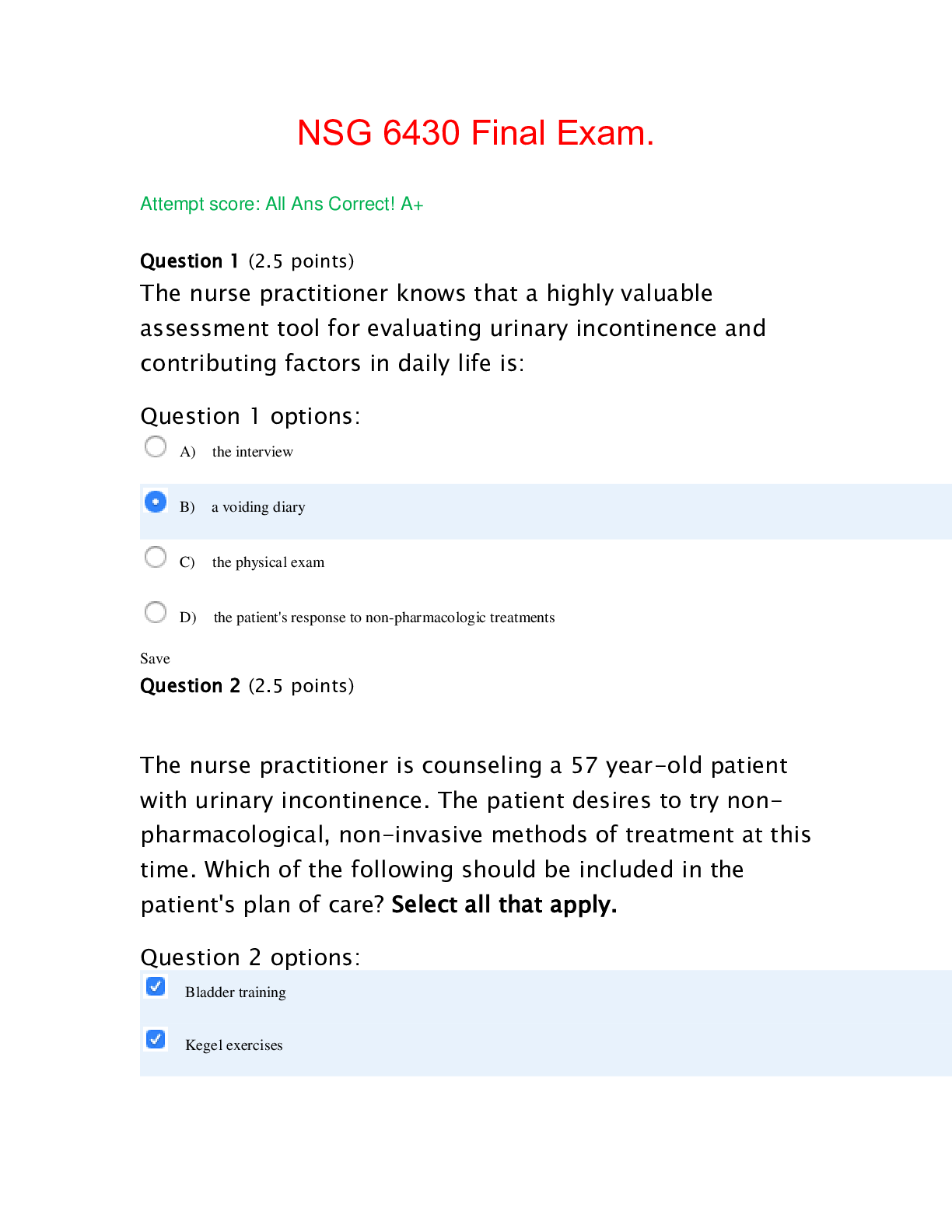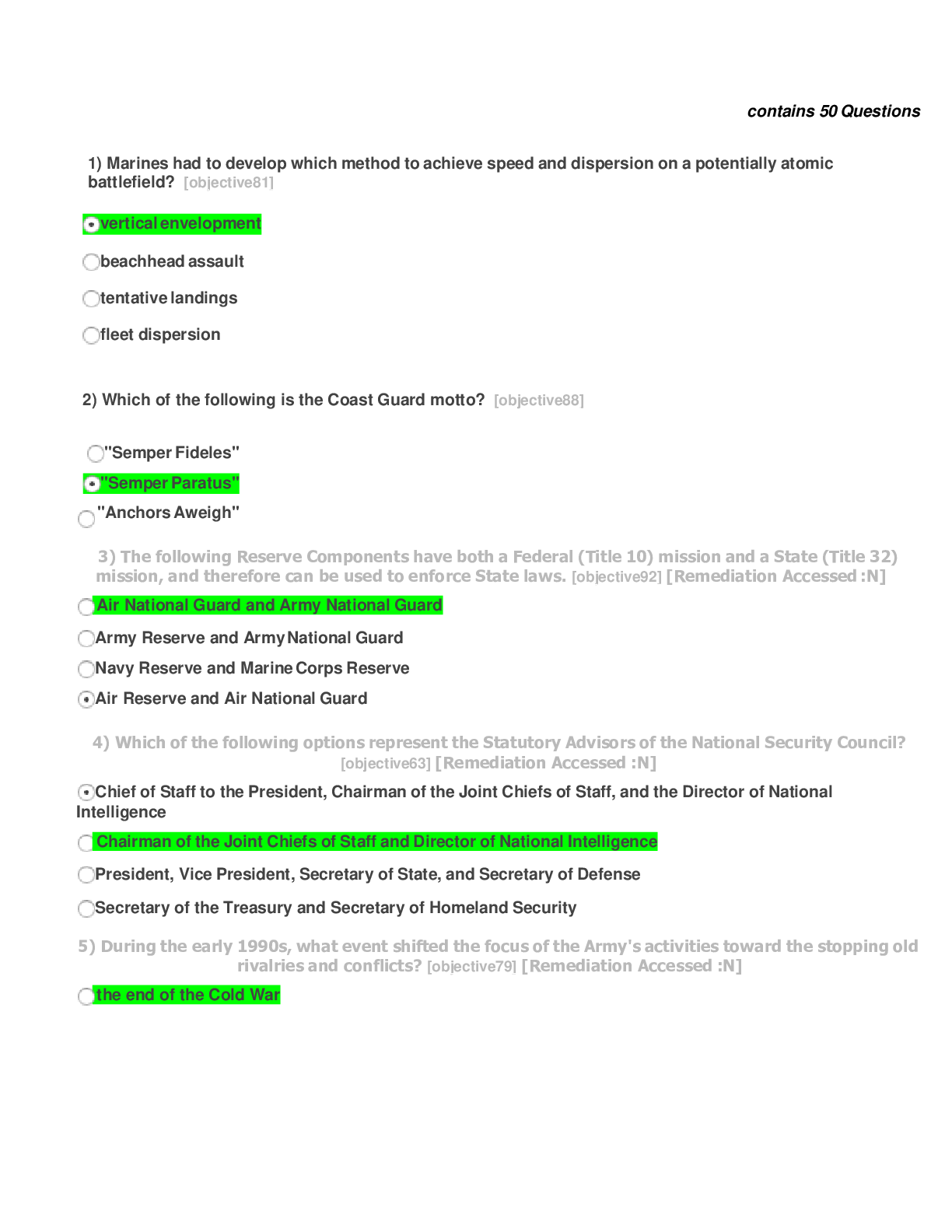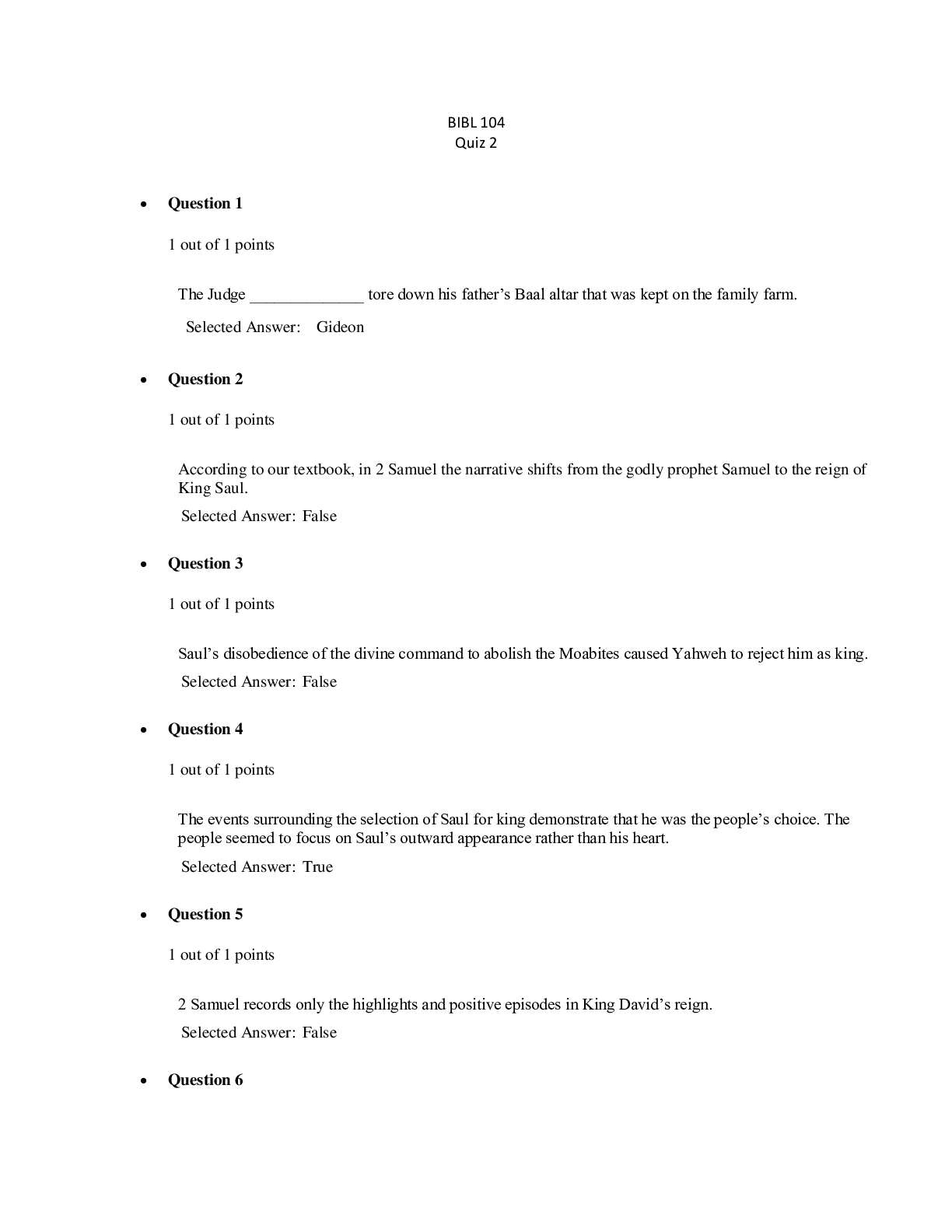Psychology > EXAM > COUN 5832 UNIT 10 QUIZ - Already Graded A+ (All)
COUN 5832 UNIT 10 QUIZ - Already Graded A+
Document Content and Description Below
COUN 5832 UNIT 10 QUIZ Capella University QUESTION 1 1. Which of the following is NOT a part of a follow-up session process? a. Referral. b. Resources. c. Conflict. d. Planning. ... 5 points QUESTION 2 1. Subgroups are _____ a. a normal construct in groups. b. helpful to less powerful members. c. destructive to group process. d. all of the above. 5 points QUESTION 3 1. Silence in group is _____ a. always a form of resistance. b. a normal part of the process. c. a sign that there is work to be done. d. an indication of the need to terminate. 5 points QUESTION 4 1. Which of the following is an excellent way for adolescents to gain practical experience in expression of feelings? a. Ice-breakers. b. Homework. c. Role playing. d. Lifestyle analysis. 5 points QUESTION 5 1. In the Hill Interaction Matrix, what is said in group is known as _____ a. interpersonal style. b. content style. c. process style. d. communication style. 5 points QUESTION 6 1. The Group Leader Self-Efficacy Instrument is an instrument for evaluating _____ a. group process. b. resistance. c. leadership. d. effectiveness of techniques. 5 points QUESTION 7 1. In a healthy group, power is _____ a. shared among the group. b. held by the leader. c. determined by lottery. d. minimized by the leader. 5 points QUESTION 8 1. In the beginning stages of group, it is normal for group members to feel _____ a. confident. b. anxious. c. trusting. d. angry. 5 points QUESTION 9 1. What do I wish I had said or done? What would I do differently next time? Did I say what I really wanted to say? These are all questions designed to help the leader evaluate _____ a. self. b. the group. c. individual members. d. diversity. 5 points QUESTION 10 1. A basic rule of thumb is that the younger the children _____ a. the longer the group. b. the larger the group. c. the shorter the group. d. the older the group. 5 points QUESTION 11 1. In group-counseling relationships, children experience the therapeutic releasing qualities of _____ a. persuasion. b. discovering that their peers have problems too. c. discovering inner qualities of calm. d. the impact of parenting. 5 points QUESTION 12 1. When exploring issues in adolescent groups, group leaders are encouraged to _____ a. go fast through initial topics. b. go slow. c. try to act like an adolescent to find some common ground. d. make sure they know who is boss. 5 points QUESTION 13 1. Rescuing of individual members, denial of problems and conflict, and circular and superficial talk are all evidence of _____ a. limited awareness. b. too much cohesion. c. a teachable moment. d. social justice in action. 5 points QUESTION 14 1. When considering a comfortable setting for adolescent groups, it is important to keep the room _____ a. consistent. b. stocked with toys and games. c. decorated to an adolescent taste. d. set up in a classroom format. 5 points QUESTION 15 1. Which type of group format has a predetermined amount of sessions and will not accept new members once the group has started? a. Closed groups. b. Open groups. c. Limited session groups. d. Thanatos groups. 5 points QUESTION 16 1. For children younger than 9 or 10 years of age, the natural means of communication is _____ a. sign language. b. creative movement. c. the language of their parents. d. play. 5 points QUESTION 17 1. The typical first target of group conflict is _____ a. the leader. b. the "mother" figure. c. the silent member. d. an external authority. 5 points QUESTION 18 1. Groups with adolescents tend to work best with membership of _____ a. at least 4. b. 16–20. c. 5–10. d. at least 12. 5 points QUESTION 19 1. The tentative self-disclosure phase is characterized by _____ a. anxiety. b. deep connections. c. gradual trust-building and experience with conflict. d. relationship deconstruction. 5 points QUESTION 20 1. The importance of counselors-in-training gaining experience in group counseling is _____ a. a relatively new development in the field. b. reinforced in CACREP standards. c. only necessary for those who haven’t been in therapy. d. over emphasized. [Show More]
Last updated: 2 years ago
Preview 1 out of 8 pages

Buy this document to get the full access instantly
Instant Download Access after purchase
Buy NowInstant download
We Accept:

Reviews( 0 )
$8.00
Can't find what you want? Try our AI powered Search
Document information
Connected school, study & course
About the document
Uploaded On
Dec 09, 2019
Number of pages
8
Written in
Additional information
This document has been written for:
Uploaded
Dec 09, 2019
Downloads
0
Views
380


























